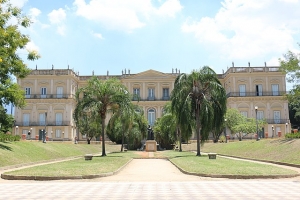Suppose there is an outdated norm in a trade agreement that, in a concrete case, ends up representing a barrier to innovation to a given company and/or sector. What can be done in such case? How is innovation viewed and regulated under international trade law, and in the realm of international trade agreements? In fact, is it even regulated under international trade law? Is there a right to innovation, to innovate and/or to innovative goods and/or services under international law and, more specifically, under international trade law?
Those were some of the issues that guided my studies that culminated in my PhD thesis before the University of São Paulo (USP), concluded in August 2023 under the supervision of Professor José Augusto Fontoura Costa. My initial hypotheses – that somewhat reflected common sense – were that innovation per se is not specifically regulated under international trade law, that there is no uniform view on the subject, and that international trade agreements have addressed it differently according to the parties involved and the period in which they were agreed upon. Such hypotheses were almost all confirmed during my studies, with a few caveats and granularities.
The objective of this article is to briefly summarize the main topics and general findings of the said doctoral thesis, aiming at humbly providing inputs for those interested in studies on innovation and its interface with law, but also to policy makers that may be faced at some point with the challenge of regulating innovation, especially in an international setting.
At first, in order to lay the conceptual groundwork for the thesis, it delved into possible definitions of “innovation” from the perspective of different areas of knowledge. All in all, it concluded that “innovation” is a polysemantic term – it is one of those broad terms that everyone seems to know what it means and what it entails, while each person defines it and understands it differently. And that holds true even amongst States and international organizations, which is evident by the way each of them views and regulates the subject. For instance, the Oslo Manual (2018) – developed by the European Communities and the Organization for Economic Cooperation and Development (OECD), as a reference guide for collecting and using data on innovation –, states that the term “innovation” can signify both an activity and the outcome of the activity, and provides a general definition of the term as “a new or improved product or process (or combination thereof) that differs significantly from the unit’s previous products or processes and that has been made available to potential users (product) or brought into use by the unit (process)”.
The thesis then proceeded to detail the results of an empirical analysis conducted by the author of the legal texts of the multilateral trade agreements notified to the World Trade Organization (WTO) on various issues, and then of the Regional Trade Agreements (RTAs) notified by the WTO members to the WTO RTA Database, selecting the provisions that contained the keyword “innovation” or its variations for further categorization and content analysis. For comparison purposes, a separate analysis on the keyword “technology” and its variations was also conducted, through which it was clear that “innovation” and “technology” are not being used interchangeably, though they could be related. Some of the trade agreements that are yet to be notified to the WTO were also mapped and assessed, as well as a selection of agreements that do not need to be notified to the said Organization (such as the Digital Economy Partnership Agreement – “DEPA”). The objective was to ascertain how often those terms are being used, in which contexts, by which parties and how such use evolved throughout time, in an attempt to verify whether there are common grounds and trends between the different agreements concerning the regulation of innovation in those instruments.
As a result, in sum, it concluded that: (i) though there has been an increasing use of the term “innovation”, especially in more complex agreements (Free Trade Agreements – FTAs and Economic Integration Agreements – EIAs) involving high income or upper middle income countries, the references are not so abundant, and most often limited to “softer” (though still relevant for the purposes of treaty interpretation) provisions such as on Cooperation commitments and in the Preamble and the overarching Objectives of those agreements; (ii) there were also recurring mentions in intellectual property (IP) chapters and sections, but it is clear that most of the agreements acknowledge, implicitly or explicitly, that “innovation” is not restricted to IP issues; (iii) the versatile and multidisciplinary nature of the concept of innovation has reflected in the fact that it appeared in provisions on a variety of subjects and sectors, and in more recent agreements signed or under negotiation, ‘newer’ subjects are starting to appear in provisions that mention innovation (though still in generic terms), such as artificial intelligence and data protection. The assessment conducted also evidenced that there are some frameworks, model provisions and set phrases that mention “innovation” that seem to be repeated and recycled amongst different agreements, with little to no adaptation. The echoing of such provisions may be due to the existence of some countries or blocs of countries that have signed multiple agreements throughout time, almost acting like ‘hubs’, such as the European Union.
Going further, the thesis proceeded to delve into the provisions that mention “innovation” from the RTAs previously mapped, applying a theoretical framework extracted from the article “The Concept of Legalization”, by ABBOTT, KEOHANE, MORAVCSIK, SLAUGHTER and SNIDAL (2000). The aim was to verify whether those provisions lean towards “harder” legalization or a “softer” legalization (with the indicators “obligation”, “precision” and “delegation”). The analysis of a selected sample of provisions confirmed the general impression that they lean more towards a “softer” legalization.
Then, a reflection on whether there is a right to innovation, to innovate and/or to innovative goods and services was presented, to better understand the rationale adopted by State actors when drafting and negotiating provisions involving innovation – concluding that there is no clear-cut right to innovation, though it could be argued that it could be related to (or derived from) an alleged right to development, and/or a right to grow through innovation. Notwithstanding that, such discussions have not directly impact how innovation has been incorporated or not in the trade agreements herein analyzed.
Additional reflections were put forward on the intersections between domestic and international regulations on innovation: first, on the possible risks, benefits and opportunities of explicitly regulating “innovation” in international trade agreements. Then, going through recent domestic legislation, institutions and policies on innovation of Chile, Singapore, the United Kingdom – that have included provisions on innovation in trade agreements – and, for a counterpoint, Brazil, which has a domestic innovation system, but did not come up in the results of the first part of the thesis.
Finally, with a prospective view, the thesis suggested possible improvements in the regulation through trade agreements involving innovation, as well as a reflection on whether there is a need and convenience for a multilateral agreement on innovation. It concludes that it does not seem to be the case so far, as there are neither substantive uniformity on the issue, nor more holistic approaches on the subject at the international arena. Moreover, it verified that RTAs have been used as regulatory laboratories for a topic – innovation – that is already intrinsically fragmented by itself.
Due to such complex nature, it is understandable that many countries and territories apparently prefer to regulate it through domestic legislation, institutions, and policies. After all, it seems to be more productive to first develop a stronger internal innovation system, institutions, policies, and priorities, preserving and exercising the so-called ‘policy space’ of a country, to then proceed to discuss and implement international policies and initiatives on the subject, especially considering that many of them rely on the idea of a two-sided cooperation. In conclusion, it remained clear that, regardless of all the above mentioned, the existence of domestic institutions, regulation and policies on innovation is vital to support any international effort and commitments regarding innovation issues.
If any queries or comments arise from this piece, please feel free to contact me at: camila.tomimatsu@gmail.com. The abovementioned thesis is yet to be made available at the Digital Library of Theses and Dissertations of the University of São Paulo.
-

PhD in Law from the University of São Paulo Law School. LL.M. from Harvard Law School. Associate at the law firm Magalhães e Dias – Advocacia.





